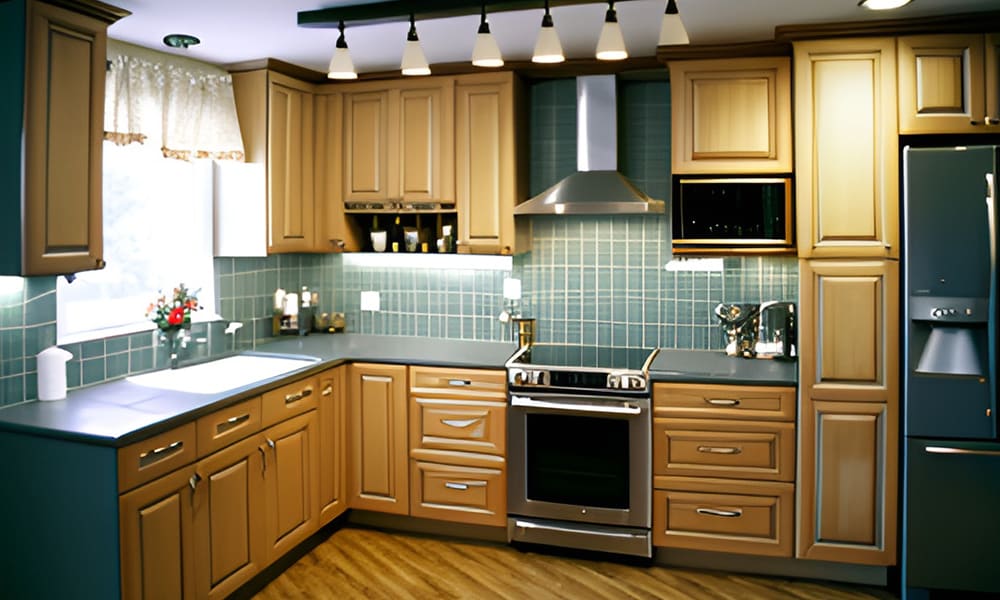Kitchen Renovation Guide 2025 USA: Planning, Design, Functionality, and Value Enhancement
A well-planned kitchen renovation can improve daily cooking and boost your home's market value. This 2025 USA guide covers planning, layout and functional upgrades, design considerations, and smart budgeting to help you achieve a successful, value-enhancing kitchen remodel.

Establish Your Remodeling Objectives and Budget
A successful kitchen renovation begins with a clear understanding of your goals. Are you looking to improve workflow, expand storage, refresh the aesthetic, or boost your property’s resale appeal? Identifying your priorities upfront helps guide all the decisions that follow.
Equally important is setting a realistic budget. Kitchen renovation costs can vary greatly depending on the project’s scale and chosen materials. Industry data recommends allocating roughly 10-15% of your home’s value for the kitchen upgrade, covering materials, labor, permits, and a contingency reserve of 10-20% to address unforeseen costs. Careful budgeting allows you to focus spending and avoid unexpected financial strain.
Evaluate Your Current Kitchen’s Strengths and Weaknesses
Before diving into changes, thoroughly assess your existing kitchen space. Take note of features that function well and those that cause inconvenience or inefficiency. Typical issues include clutter-prone areas, poor movement flow, or inadequate lighting.
This thoughtful evaluation helps you target improvements that enhance everyday use, such as installing custom storage solutions, extending countertop areas, or reorganizing clutter zones. Avoiding needless modifications can save money and time while delivering meaningful benefits.
Enhance Layout for Improved Functionality
Maximizing efficiency through layout design is fundamental in kitchen remodeling. The classic work triangle—connecting the sink, stove, and refrigerator—remains essential for minimizing unnecessary steps and smoothing task flow.
Depending on your kitchen size and usage, explore layouts like galley, L-shaped, or island-centered configurations. Ensure ample room for easy movement and appliance access while maintaining proper clearance for drawers and doors.
Incorporate features such as pull-out pantry shelves, deep utensil drawers, and designated zones for baking or food prep to customize the kitchen to your habits. A well-designed lighting plan combining ambient, task, and accent lights will boost both style and practicality.
Select Durable, Attractive, and Sustainable Materials
The materials you choose affect the kitchen’s durability and appearance. Quartz countertops are popular for their strength and low maintenance, while cabinet finishes range from neutral painted surfaces to natural wood grains and eco-conscious options like bamboo or reclaimed wood.
Matte black hardware finishes offer a modern touch and blend with various design themes. Opt for materials that resist stains, scratches, and wear, and that are easy to clean, helping your kitchen maintain a fresh look for years to come.
Environmental sustainability is gaining importance, with options like recycled glass countertops and green cabinetry contributing to a more eco-friendly home.
Strike a Balance for Optimal Return on Investment
According to 2024 remodeling market research, midrange kitchen renovations often deliver the best return on investment (ROI), with some small upgrades recovering up to 96% of their cost at resale. Target updates to cabinet fronts, hardware, countertops, sinks, faucets, and energy-efficient appliances.
While high-end or extensive remodels may yield lower percentage returns, they can significantly enhance lifestyle quality and curb appeal. Striking a balance between functionality, style, and budget is generally the best approach.
Cut Costs Without Compromising Quality
Practical strategies can help keep remodeling costs down without sacrificing quality. For instance, refacing cabinets instead of full replacement can cut expenses by up to half. Avoid moving plumbing or electrical fixtures unless absolutely necessary, as these changes can be costly.
You might consider purchasing slightly older or discounted appliances, and explore cost-effective yet durable countertop choices like butcher block or quality laminates. Taking on DIY projects such as demolition, painting, or installing backsplashes can reduce labor expenses, though complex tasks should remain with qualified professionals to prevent mistakes.
Work with Skilled Professionals and Understand Local Codes
Hiring experienced kitchen designers and contractors who are knowledgeable about local building codes and permitting is essential to ensure your renovation meets safety and quality standards. Verify references and review portfolios to select reliable experts with a strong track record.
Maintaining clear communication about budgets, timelines, and project milestones will help align expectations and reduce disruptions. A professional team minimizes risks related to inspections or construction errors.
Plan for Timeline and Living Arrangements During Renovation
A typical full kitchen remodel takes around 4 to 8 weeks, depending on the scope and any structural changes. This timeframe includes demolition, plumbing and electrical work, cabinetry, and finish installations.
Prepare for a period without full kitchen use by arranging alternative cooking options or relying on prepared meals. Regular progress updates from your contractor will keep you informed and allow flexibility to adjust plans if needed.
Customize Your Kitchen to Fit Your Lifestyle and Preferences
Beyond functionality, personalizing your kitchen turns it into a warm and inviting space that suits your tastes. Popular options include built-in wine coolers, coffee stations, vintage or statement lighting fixtures, and integration of smart-home features such as voice-controlled lighting or hands-free faucets.
Think about incorporating specific storage or work areas tailored to your interests—for example, a baking nook with a marble slab surface. These thoughtful additions enhance daily enjoyment and can boost appeal to future buyers.
Conclusion
Executing a kitchen remodel in the U.S. in 2025 requires careful attention to functionality, design, and investment value. By defining your goals, assessing your current space, optimizing layout, choosing long-lasting materials, and hiring knowledgeable professionals, you can craft a kitchen that fits your needs and elevates your home’s worth. Sensible budgeting and prioritizing key upgrades will help you achieve a rewarding outcome without unnecessary stress or overspending.
Sources
- Bob Vila: Planning Guide to Kitchen Remodeling
- KC Bath Remodel: How to Plan a Kitchen Remodel
- Hoopoesecho: Kitchen Remodeling Overview
Prices and availability mentioned vary by location, dealer, and current promotions. It is recommended to verify with local providers. This article does not contain promotional offers.




